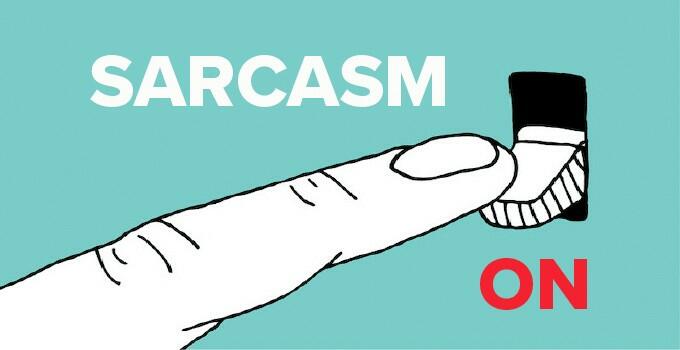Long words have a tendency to get shorter with time, and with today’s social media crazed world, shorter words and acronyms are making their way into the English language every day.
For example, in 2016, when Collins, the English dictionary, released its “words of the year list,” the list included the following words:
JOMO
JOMO is an acronym that stands for the “Joy Of Missing Out,” and it follows in the footsteps of other recent classics such as YOLO and FOMO.
Basically, JOMO refers to the pleasure one feels when they pass up on plans with others.
Brexit
A catchy name for “Britain’s Exit” out of the European Union, Brexit has become such a fashionable word over the past few years that it pops up in almost every conversation about politics these days.
This tendency towards shorter words can also be found in what we write just as much as it does in what we say. For instance, /s is an excellent case in point: It is a term that can come to abbreviate several other words.

What does /s mean?
Even though /s is used way more in writing that it is used in speech, it has come to have a few meanings. It is used to denote sarcasm within online communities, specifically on Reddit forums and other online message boards. For the physicists and scientists out there, /s is a mathematical notation that means per second. The term is also used in HTML coding to strike through a certain portion of text. And, one archaic use of /s is to refer to a signature when quoting documents.
/s and sarcasm
Sarcasm is a subtle art, one that easily goes over the head of a lot of people. The thing with sarcasm is that people may be unsure whether the person speaking actually means what they say or they are just being sarcastic.
And the only way to tell the difference is contextual, meaning it relies on, among many other things, our previous knowledge of the person speaking, how the person said the sentence including their tone of voice, what was said before in the conversation, and where the conversation is being held.
However, this is the internet, where most things are devoid of context, an individual doesn’t know 90 percent of the other people they are interacting with, and good luck to anyone trying to discern someone else’s tone of voice as they write something down.
To make matters worse, people used to be happy relying on 140 characters to send each other fully formed ideas in the form of tweets (Mind you, when speaking about characters, we are talking about letters and spaces, not words.
The words between these brackets alone make up 246 characters, without counting the brackets. Imagine seeing this sentence but having no context for it.)
Thank God Twitter increased the allowable number of characters from 140 to 280. /s
As a result of this lack of context, it really isn’t difficult to imagine all the misunderstandings and disagreements that fester.
For example, it happens quite often that someone says something sarcastically, only to be called out by someone who didn’t get the joke. This is where /s comes in.
In order to avoid these disagreements, people online put /s, also known as the sarcasm switch, at the end of their sentences to signal that they were being sarcastic about what they had just said.
Here are a couple of examples:
Professor James is my favorite professor; the man knows his stuff. /S
Me: How much will repairing the laptop cost?
Technician: You’re looking at 250 bucks.
Me: Oh great, your prices are so cheap that they’re practically a steal. /s
Other cases similar to /s
It is worth noting that using a slash and a letter to contextualize a sentence or even an entire paragraph isn’t an isolated incident; the internet has been using this trick for a while.
In fact, using a slash followed by a qualifier provides context for everything that’s been said before it. For example, if I use /rant after a long paragraph, I’m letting the readers know two things:
- Everything before the “/rant” was me ranting and venting about something bothering and that I needed to get off my chest.
- I am now done with my rant.
As a matter of fact, /s started out as a slash followed by the qualifier-descriptor “sarcasm.” It wasn’t until way later that /sarcasm got shortened to /s.
What are the origins of /s?
Of all places, /s got its start in HTML, which stands for HyperText Markup Language and is the basic coding language used to power the internet.
In fact, everything you see on this page, including the article you are reading right now has been created using HTML.
In HTML, whenever you want to give the browser an order, you use angle brackets to create tags, which look like this: “< tag >”.
What happens is that these tags let the browser know how to display a certain page. The tags can format the text, create hyperlinks, insert tables and images and do much more.
Tags come in pairs. For every “<tag>” at the beginning of a text, there has to be a “</tag>” at the end of that text. Here is a simple example:
Let’s say I wanted to let the browser know that I was about to write a new sub-heading, so I’ll use the “h4” heading tags.
<h4>New sub-heading:</h4>
When the browser sees the above sentence, it will interpret the tags as signifying that this is a new heading and should be formatted as such. The final rendering would look like this:
New sub-heading:
So, why does any of this matter?
Well, this is how /s started. At the very beginning, an individual who wanted to be sarcastic would start and end their statement with sarcastic quotes. It would look something like this:
<sarcasm>
A sarcastic statement that no one should take literally.
</sarcasm>
The sarcasm tags were supposed to look exactly similar to the other tags used with HTML.
The only difference was that rather than being meant for the browser, these tags were targeted at the actual people reading the text in the hopes of stopping them from getting the wrong idea.
However, with time, these tags got shortened from <sarcasm>…</sarcasm> to <s>…</s>.
After a little while, the initial tag was dropped, leaving only </s> at the end of sarcastic statements.
Fast forward a bit and even the angle brackets on that second tag were tossed, leaving us with /s only. And, that is how we ended up with /s denoting sarcasm.
/s in HTML
The funny thing is that <s>… </s> is actually used in HTML coding and not for sarcasm.
These are tags that are used to let the browser strike through a certain piece of text, indicating that was written was no longer correct.
For instance, if someone had one written on their blog:
I support the so and so community.
A few years later, our blogger has had a change of heart, and they no longer support the aforementioned community.
They want to let it be known that they have changed their opinions, but they do not want to hide their earlier position.
So, instead of deleting what they had said a few years earlier, they decide to keep it but strike through it just to show that it is no longer true.
So, they would write:
<s> I support the so and so community.</s>,
And it would look something like this:
I support the so and so community.
/s in the sciences
Physicists like to measure and compare different quantities.
For example, physicists define speed as measuring the distance a body covers over a specific period of time.
If the unit of measuring distance were meter and the unit for time were second, then a physicist would be asking themselves how many meters does this body cover every second?
In mathematical notation, it would be written as “m/s.”
In fact, /s means per second and can be used in any context in which time is a factor.
Here are a couple of more examples:
The dimension of power is J/s, which stands for Joule per second.
The dimension of angular speed is rad/s, which stands for radian per second.
/s in quoting documents
Now, this one is a bit old, but a while back, when quoting a document, an “s” between two slashes was used to indicate a hand-written signature and was put at the closing of the document.
For example, let’s say we were quoting an old letter, and at the end of the letter, we wrote:
Sincerely,
/s/
Chandler Bing, IT procurements manager
Seeing the “/s/” at the end means that Chandler Bing’s hand-written signature was at the bottom of the original document right after the word “Sincerely.”
/s: Wrapping it all up
Language adapts to the times, and today’s online conversations require a way to add some context, which is where conversation tags like the sarcasm switch, /s, come in handy.
What was also fascinating was to see how this tag, like several other words, got shortened with time and went from two tags to a single slash followed by a single letter.
This act of truncation wasn’t limited to online conversations; physicists use it to show physical quantities.
It was also enjoyable to see how the same expression can play completely different roles in an old practice, quoting documents, and in a new one, writing HTML code.

Hey fellow Linguaholics! It’s me, Marcel. I am the proud owner of linguaholic.com. Languages have always been my passion and I have studied Linguistics, Computational Linguistics and Sinology at the University of Zurich. It is my utmost pleasure to share with all of you guys what I know about languages and linguistics in general.

